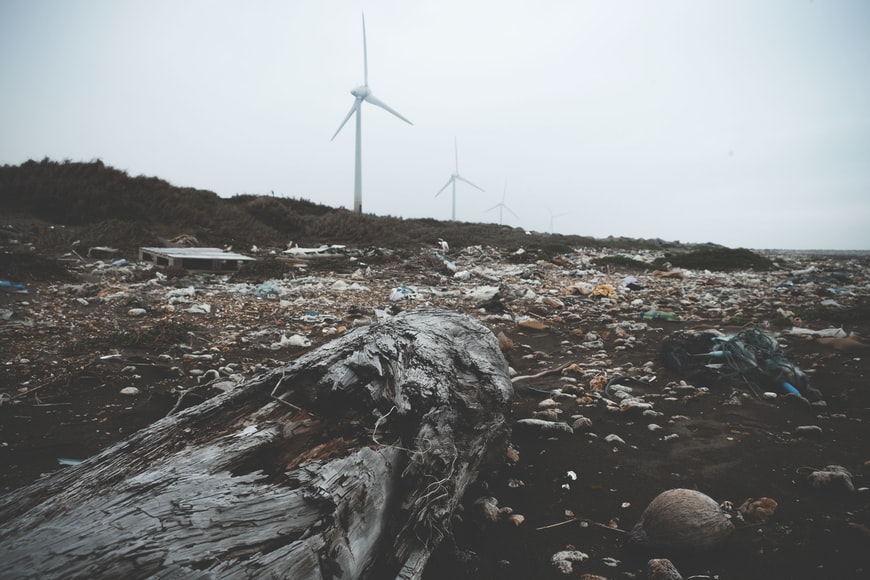Pollutant Types And Their Impact On The Environment
In the face of pollution, a nexus of effects that transcends the bounds of mediums and geographies has been established. An acid rain occurrence known as acid rain occurs when air pollution coupled with nitrogen and sulphur reacts and causes further damage to water, soil and brick and mortar constructions.
It should be noted that this is simply one example of a relationship developed due to pollution. Imagine what it will do to our future generations if we don’t do something about it now. To commemorate National Pollution Prevention Day in 2021, let’s take a look at some of the different kinds of pollution currently exist around the world.
Pollution Of The Air
Air Pollution is the most readily apparent source of the smog that limits our ability to see well. In addition to air pollution, amounts of Greenhouse Gases, Carbon Monoxide, Aerosols, and Chlorofluorocarbons are all pollutants can contribute to climate change.
Pollution Of Water Resources
Water Pollution is the result of large-scale, high-cost initiatives such as the construction of buildings, factories, and businesses that pollute the environment. One of the main causes of Water Pollution is the influx of wastes and residues, including hazardous substances.
Pollution From Plastic
An estimated 25,000 metric tonnes of plastic enter the environment each day in India, according to estimates. According to that information, plastic pollution is increasing by 25,000 tonnes each day. As a result of plastic waste, marine life in waterways is harmed greatly.

Combustible Waste
Soil Pollution refers to soil that has been contaminated. Soil contamination and degradation can occur for a variety of reasons. Some of the causes include deforestation, acid rain, agricultural and industrial chemical use, and more.
Pollution Due To Audio Emanation
Because of its widespread presence in the environment, this sort of pollution has a direct impact on one of the most important components in an ecosystem—humanity. The long-term effects on health and mental well-being of noise pollution from factories, automobiles, and machinery are significant.
Radioactive Impact
One of the most harmful forms of pollution for the environment, as well as for humans, is Radioactive Pollution, which is caused by radioactive contaminants. Death or disfigurement are among the consequences suffered by those who are harmed.
Misuse Of Intelligence
This is a new and emerging form of pollution, yet it has the potential to cause significant harm to society and the environment. There has been an increase in this type of pollution since the emergence of Internet 2.0, which has brought with it a flood of information that contains mental pollutants like fake news, misinformation, or disinformation.
Approaches To Pollution Reduction With A Focus On
Any and all actual and potential pollution-producing activities, including those in the agriculture, federal government, consumer and commercial sectors can benefit from pollution prevention strategies. Preventative measures are vital for protecting wetlands, groundwater sources, and other critical ecosystems from pollution.
The extraction, processing, transportation, and combustion of fuels can all cause environmental harm, but pollution prevention in the energy industry can help minimise such effects. Approaches to preventing pollution include:
- Enhancing The Effectiveness Of Energy Consumption
- Fuels Derived From Non-Toxic Materials
Approaches To Pollution Prevention In Agriculture Include The Following:
- Ensuring That Heat And Water Inputs Are Minimised
- Use of insecticides that are less hazardous to the environment or the use of crop varieties that are naturally resistant to pests;
- A safe haven for those who need it.
Examples of P2 practises there in industrial sector include:
- The reduction of waste generated through the use of process modifications
- Using cleansers, degreasers, and other service chemicals that are non-toxic or less harmful.
- Using water and energy more efficiently
- Instead of throwing away resources like drums and pallets, consider reusing them.
- P2 practises can be found in a variety of places, including the following:
- Reusable water bottles are preferable to single-use plastic bottles.
- Turning off the lights while they’re not in use.
- Repairing dripping hoses and broken faucets
- Using “green” cleaning products



